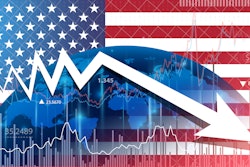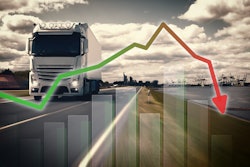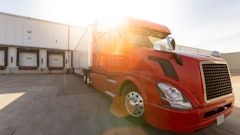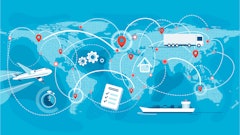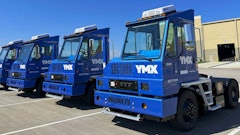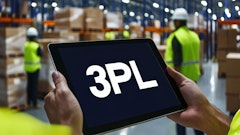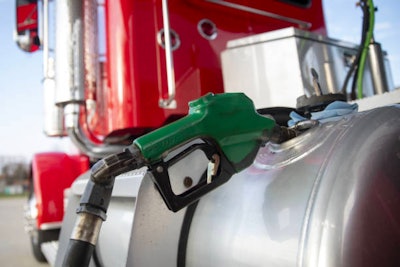
What a time to work in the supply chain industry. From port strikes and rail strikes to environmental, social, governance (ESG) regulations, electrification mandates and natural disasters shutting down major roads and ports, it’s a wonder any food and beverage moves through the cold chain.
But have no fear, it’s not all doom and gloom.
Food Logistics talks exclusively with Jenny Vander Zanden, COO at Breakthrough, about the State of the Economy and how international challenges and geopolitical relations impact transportation priorities.
CLICK HERE to read the full article.
Food Logistics: From your perspective, what are considered the Top 5 trends to watch in 2025? And why?
Jenny Vander Zanden:
Economic uncertainty affecting transportation priorities: One of the top concerns for organizations is navigating economic uncertainty. Cost reduction remains the #1 priority, but it’s not affecting every industry equally. We’re seeing industries like durable goods manufacturers – think building products and automotive suppliers – facing more challenging economic conditions than others because of energy and raw material costs and rising interest rates. This adds an extra layer of complexity to their decision-making and makes transportation cost reduction that much more important for these shippers.
The start of more active CO2 emissions tracking: More organizations are making sustainability a core focus and have established sustainability baselines, bringing to light their current carbon emissions output. One of the key trends we’ll be seeing more of in 2025 is more baseline tracking and using this insight to take action to reduce CO2 emissions, moving beyond Scope 1 emissions reduction to Scope 3. This trend is crucial as companies race to meet sustainability goals, many of which are fast approaching with 2025 and 2030 deadlines.
Pressure to find cost-effective sustainability solutions: As the clock ticks closer to those sustainability deadlines, the pressure to find not only cost-effective solutions but the right and most effective solutions is growing. Shippers are looking for practical ways to meet sustainability targets without sacrificing their bottom line, leading to them considering new carrier partners, alternative modes of transport, or carriers prioritizing alternative fuel options.
International challenges and geopolitical relations: On a global scale, the supply chain is fraught with challenges. There has been a lot at play over the past couple of years, from bottlenecks at international chokepoints (like the Panama and Suez Canal) to labor uncertainty at ports and railways. On top of that, ongoing political dynamics, particularly with China, have manufacturers rethinking their supply chain strategies and footprints – balancing operations internationally and domestically.
On-demand intelligence and AI-driven decision-making: Data and AI are transforming decision-making processes. Companies are learning more about their transportation networks thanks to real-time data and advanced AI tools. Ultimately, this helps them make quicker, more informed decisions, which is especially important as businesses aim to boost productivity without constantly expanding their resources.
Food Logistics: Describe some of the challenges impacting many of today’s supply chains. This can include everything from port/rail strikes and ESG regulations to adopting technologies and more.
Vander Zanden: The complexity in today’s supply chains is increasing exponentially. One of the most significant challenges for shippers is the need to do more with fewer resources. Between labor shortages, significant market disruptions, and growing regulatory demands, businesses are being asked to navigate more obstacles without adding extra capacity. For example, port and rail strikes have caused increased freight rates or service challenges, and compliance with ESG regulations adds another layer of responsibility. At the same time, companies are adopting new technologies to streamline operations, but implementation comes with its own set of hurdles.
Food Logistics: Describe the State of Transportation, and how factors such as port/rail strikes, electrification, trucking wages, trucking mandates, and more will affect the State of Transportation in 2024.
Vander Zanden: As we head into Q4 2024, transportation supply and demand are relatively balanced – perhaps even slightly oversupplied. Full truckload and rail rates have held relatively steady for the past 8-12 months, which has helped the industry absorb minor supply chain disruptions more easily. Most of the impacts we’ve seen in the spot market have been short-lived. So, while issues like port strikes or regulatory changes are certainly challenges, the overall capacity in the market has helped minimize long-term effects.
Food Logistics: The global container shipping industry continues to witness an increase in freight demand for U.S.-bound shipments. What does this mean? And what will this look like come 2025?
Vander Zanden: We’ve seen an uptick in activity, partly because peak season was pushed ahead due to the uncertainty around port strikes. Although these strikes settled in record time, the temporary extension only goes through mid-January, leaving room for potential disruptions if a long-term agreement isn’t reached.
It’s also worth noting that labor agreements for West Coast ports extend through 2028, which could provide some stability. However, elections in 2024 could bring policy changes that may impact global trade and shipping volumes, so that’s another factor to keep an eye on.
Food Logistics: Let’s talk State of Software and Technology. What kinds of emerging technologies are your company/your customers/your members implementing to improve resilience, transparency and visibility?
Vander Zanden: While many companies can access lane-level data, many don’t leverage detailed load-level data to drive strategic insights and decisions. This is a missed opportunity because load-level data captures the details of each shipment, including equipment type, weight, cube and pack constraints, and cost. With an ecosystem of load-level data, operational teams can monitor performance compared to industry benchmarks to assess if their networks are on track. With solutions like machine learning or Large Language Models (LLMs), shippers can analyze vast amounts of data efficiently, compare various scenarios, and unlock immediate long-term benefits.
Machine learning specifically stands as a pivotal technology poised to further transform the supply chain, logistics, and transportation sectors. Shippers must be prepared to adopt and leverage these technologies to maintain a competitive edge. AI is expected to have a profound impact on unlocking a network’s actual total capacity. As enhancements in processing power and the ability to assess and derive insights from vast amounts of disparate data, we can expect to see a fundamental shift in how the industry derives data-driven insights.
Food Logistics: Let’s talk ESG regulations. Sustainability reporting is a big thing to come in 2025. Walk us through the steps your company/your customers/your members are taking to ensure ESG compliance.
Vander Zanden: The approach really boils down to three key steps: track, plan, and execute. Tracking emissions at a lane-by-lane level is crucial – there’s no one-size-fits-all solution or silver bullet that will work for a shipper’s entire network. Shippers need a strong lane-level baseline, and from there, they can create action plans to reduce emissions through various stages, like carrier selection, mode conversion, optimization of networks and loads, and incorporation of alternative energy solutions. It’s all about taking a targeted, data-driven approach to carbon reduction.
Food Logistics: How do other more global events such as the Russia/Ukraine War, hurricanes, the Red Sea attacks and more impact U.S. global supply chains? What is the outlook for 2025?
Vander Zanden: Global events absolutely impact supply chains, primarily through their effect on energy costs. Rising fuel prices can make it more expensive to move goods to market. In response, some of our clients are looking for ways to gain budget certainty. For example, they’re considering market-based fuel reimbursement strategies or seeking fixed fuel price opportunities, allowing for more predictable costs in an otherwise volatile market.
Food Logistics: What are some things not addressed above that may be pertinent to our cold food chain readers?
Vander Zanden: Understanding your transportation and refrigeration needs for the cold food chain begins with data – specifically, knowing your consumption patterns, costs, and emissions. Having a clear picture across your entire network is essential because your customers are increasingly focused on sustainability. As Peter Drucker famously said, “You can’t manage what you don’t measure,” which also applies here. By understanding the data, businesses can take meaningful steps to reduce their environmental impact while meeting customer expectations.
CLICK HERE to read the full article.




